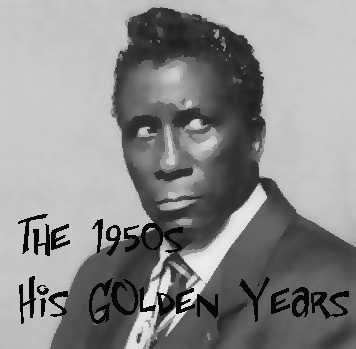Twilight
and Resurgence
There were lulls too, and a long stay in Hawaii. As the 60s loomed, only a Hawaii club residency with Shoutin' Pat Newborn was keeping his career alive. However, he was back by 1962 with the storming, disturbed single, "I Hear Voices", as well as the introspective "Ashes", which was recorded with the volatile Newborn. Her services were dispensed with, however, after she knifed Jay for meeting the woman who became his wife.
For much of the 60s Jay's career stumbled along in a series of fits and starts. After Nina Simone covered "I Put A Spell On You", Jay wrote "Poor Folks"/"Your Kind Of Love" for her in 1965. She refused to record them, and Jay was left to do so himself in typically macabre fashion. He returned to Hawaii in 1966, but by the end of the 60s success in the UK meant that he was signed to the Philips label and he released the LP What That Is (1969). Tracks included the cannibalistic "Feast Of The Mau Mau" and the tasteful "Constipation Blues", replete with very predictable sound effects.
The next decade was marked by a two-year break from touring in the mid 70s due to a stage accident in which Jay was burned by one of his trademark flaming stage props. He reappeared in the 1978 movie "American Hot Wax" in which he complains loudly about his coffin. Screamin' Jay then cameod in Jim Jarmusch's 1989 film "Mystery Train", as a hotel desk clerk who argues with his bellboy about Japanese plums, and he tells him to "take off that hat! You look like a monkey!" This helped revitalize his career and Jay states that,
Three white people who've spurred me on are Alan Freed, who put the coffin in my act; Louis Dulfon, who gave me my own license to run my booking agency here in California, which is called Hawkshaw Talent Company; and Jim Jarmusch, who came out with Stranger Than Paradise and used "I Put a Spell on You" in it and put me in his movie Mystery Train.
Screamin' Jay parlayed that appearance into a role in "Two Moon Junction," in which he appeared with Sherilyn Fenn. On his 1991 album "Black Music for White People" there is an untitled country blues track that goes "It was me and Sherilyn Fenn/I had nightmares what it would be like to get in!" The complete song turns up on the next album, "Stone Crazy". "A Rage In Harlem" followed, as did guest spots on Arsenio and Carson, and a series of Japanese Walkman commercials.
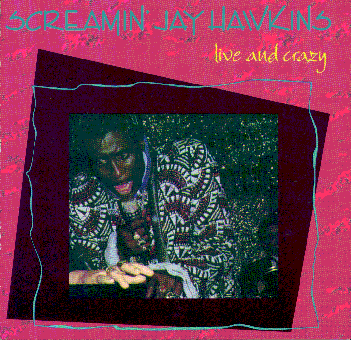
Jay has influenced or worked with a number of big names, often bigger than he. "I Put A Spell On You" has sold millions and undergone wildly varying interpretations by such luminaries as Sarah Vaughan, Alan Price, Them, and Creedence Clearwater Revival. Jay opened for the Rolling Stones at Madison Square Garden in 1980; following that, Keith Richards helped with some of Hawkins' further recordings, including a remake of "I Put A Spell On You". Screamin' Jay had a profound influence on Arthur Brown, who imitated his style, and Jay's famous stage act was replicated by Black Sabbath for its fans, who are a generation removed from those who saw Hawkins in his prime.

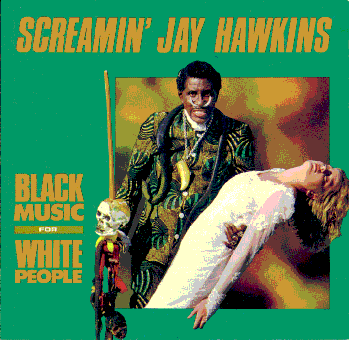
1991 Was a bumper year for Screamin' Jay. Not one, but two albums were released, the aforementioned "Black Music for White People" (released quite apropos on Rhino's "Bizarre" label) and from Australia, "I Shake My Stick At You" (Jay and Henry, his skull, appear on the cover, looking for all the world like a bushman who stepped off a Harley). Two songs, "Hear Attack and Vine" (which was featured in a Levi jeans advertisement) and Ice Cream Man" were Tom Waits tunes, and some singles even came off this album (pictured below):
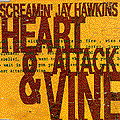
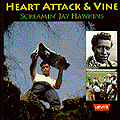
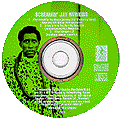
1993 Saw the release of "Stone Crazy", a solid R&B album that finally completes the tantalizing "Sherilyn Fenn" start. 1994's musically inventive "somethin' funny goin' on" (review to be completed)
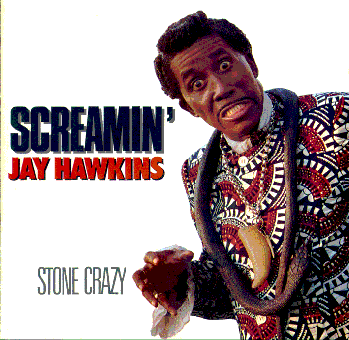
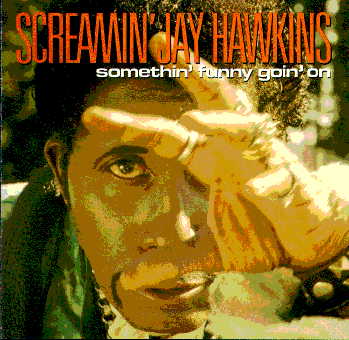
"At Last"--having taken a break to release last year's 2-CD compilation album "Portrait of a Man", Jay's latest album for 1998 is tantalizingly titled, suggesting that this is the true culmination of his work.
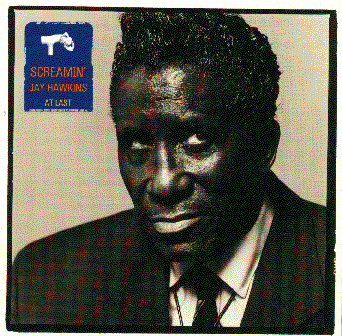
Alas, it isn't.
What it is, quite honestly, is a rather mediocre collection of songs that revisit old territory on unsure footing. Some ballads, some screaming, another laundry-list-of-absurdities song, and an uninspired cover of Bob Marley's "I shot the Sheriff". Sadly, this album is not a return to greatness. One to file away, and then it's a quick return to "Cow Fingers and Mosquito Pie" and "Black Music for White People".



